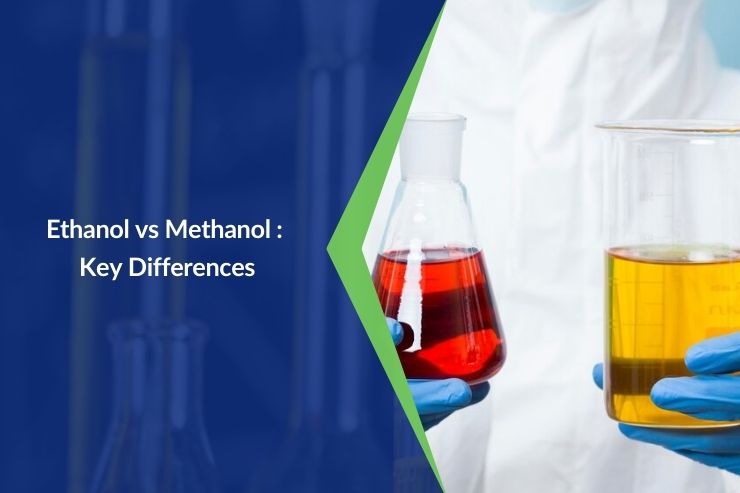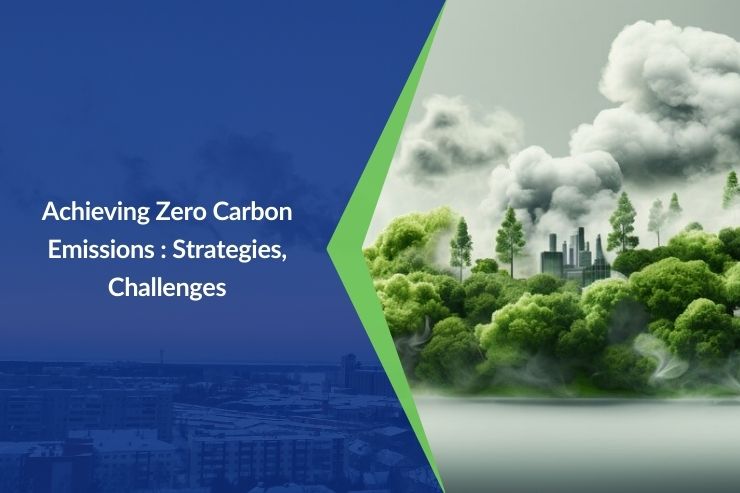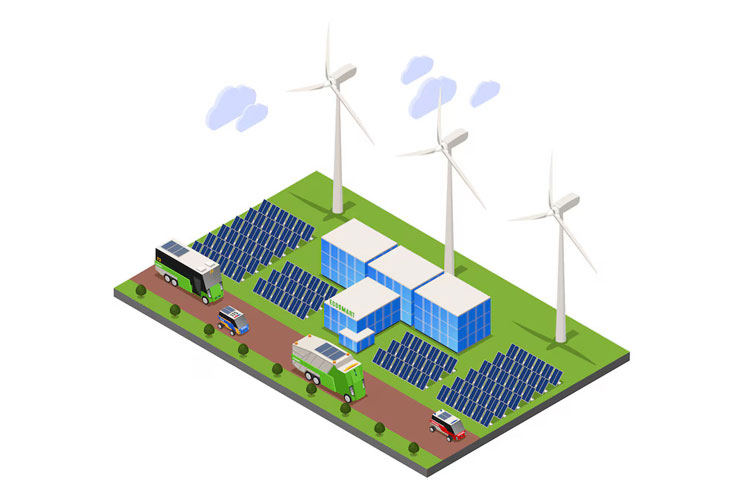Ethanol and methanol are types of alcohol used in various industries because of their unique properties and chemical structures. Ethanol, a primary alcohol, is widely used in beverages, biofuels, and pharmaceuticals, benefiting from its renewable sources like corn and sugarcane. Methanol, known for its simplicity and efficiency, is crucial in producing other chemicals, including formaldehyde and acetic acid.
What are Ethanol and Methanol?
Ethanol, or ethyl alcohol, is a common chemical in our daily lives, most familiarly in the form of alcohol in beverages. It is a chemical compound with the formula C2H5OH, which stands for two carbon atoms. It is primarily produced through the fermentation of sugars by various types of yeasts, which are primarily sourced from corn, sugarcane, and other types of agricultural feedstocks. Its applications extend beyond consumption since it has extended uses as a solvent and fuel in industries.
Methanol, or methyl alcohol with the formula CH3OH, is simpler in structure with only one carbon atom. It is produced from natural gas and has significant uses in industrial settings. Unlike ethanol, methanol is toxic and cannot be consumed. Methanol production is crucial for making other chemicals like formaldehyde and acetic acid and is used extensively as a solvent and antifreeze.
Difference Between Ethanol and Methanol
Before discussing their industrial applications, let’s first look at how these differ chemically. By examining their chemical structures, sources, and wide-ranging uses, we can better understand why these alcohols are essential in everyday products and industrial processes.
Chemical Structure and Composition
While both share their status as alcohols, their chemical makeup and physical properties set them apart significantly. Ethanol’s two-carbon structure lends it different boiling points and solubility compared to methanol’s one-carbon frame.
Physical Properties
This structural difference leads to varied physical properties such as boiling points: ethanol boils at 78°C and methanol at a slightly lower temperature of 64.7°C. Notably, ethanol is safe to consume in beverages, whereas methanol’s toxicity includes severe health risks, underlining the importance of distinguishing between the two in practical applications.
Uses of Ethanol and Methanol
Exploring the varied uses of ethanol and methanol showcases their importance in both daily life and industrial applications. Let’s understand how these substances are utilised across different sectors, from fuel production to manufacturing processes.
Common Uses of Ethanol
Ethanol is widely used as a biofuel in the form of bioethanol, which is blended with gasoline to increase octane levels and improve emissions quality. In the industrial sector, ethanol serves as a solvent in the manufacturing of varnishes and perfumes, and in scientific labs, it’s utilised as a preservative or an antibacterial agent.
Common Uses of Methanol
Methanol’s role as a feedstock for the chemical industry is vital. It is transformed into formaldehyde, an essential building block in the production of plastics, paints, and other industrial materials. Moreover, in the energy sector, methanol is emerging as a promising fuel for fuel cells and other renewable energy applications.
How Methanol is Converted into Ethanol?
Converting methanol into ethanol involves a fascinating chemical process utilising catalysts to alter the molecular structure under specific conditions.
Conversion Process
The conversion of methanol into ethanol involves a chemical process known as catalytic hydrogenation, where methanol is reacted with hydrogen gas over a catalyst, typically copper-based, under high pressure and temperature. This process effectively rearranges the methanol (CH3OH) molecules by adding hydrogen atoms to form ethanol (C2H5OH). The efficiency and yield of this conversion are heavily influenced by the choice of catalyst and the operational parameters, making the optimisation of these factors crucial for industrial scalability and cost-effectiveness.
Industrial Application of Methanol into Ethanol Conversion
In industrial settings, converting methanol to ethanol presents a valuable pathway to produce ethanol more sustainably and potentially at lower costs than traditional fermentation methods. This conversion process is particularly significant in regions where methanol is readily available from natural gas resources, but agricultural feedstocks for ethanol are scarce. The ethanol produced can then be used as a renewable fuel, a solvent, or feedstock for other chemical syntheses, aligning with global efforts to reduce reliance on fossil fuels and decrease carbon emissions in chemical manufacturing.
Health and Environmental Impact of Ethanol and Methanol
When it comes to its impact on health and our planet, ethanol is generally regarded as safer and more environmentally friendly than methanol. While both have their roles, ethanol’s combustion is cleaner, whereas methanol’s toxicity requires rigorous safety measures to mitigate risks to human health and the environment.
Ethanol’s Impact on Health and Environment
Ethanol is generally considered safer for human health and the environment than other fuels. When consumed responsibly in beverages, it’s relatively benign, but excessive consumption can lead to serious health issues, including alcohol poisoning and long-term liver damage. Environmentally, ethanol, especially when derived from bio-sources, burns cleaner than fossil fuels, producing fewer airborne pollutants like carbon monoxide and sulphur dioxide.
Methanol’s Impact on Health and Environment
Methanol is toxic to humans, with exposure potentially leading to serious health effects such as visual impairment, neurological damage, and even death if ingested. Its environmental impact, however, is somewhat mixed. On one hand, methanol burns cleaner than many fossil fuels, emitting fewer pollutants into the atmosphere. On the other hand, methanol spills can be hazardous to aquatic life and its production from fossil fuels involves emissions.
Safety Measures When Handling Ethanol and Methanol
When it comes to handling these chemicals, knowing their properties and the associated risks is vital. Proper storage, the use of safety gear, and adherence to handling protocols ensure safety in environments where these chemicals are used.
Conclusion
Understanding ethanol and methanol is key for anyone involved in industries utilising these chemicals. Recognising their differences, applications, and handling requirements can help make informed decisions that ensure safety and efficiency. As we continue to innovate in chemical processes, the conversion of methanol into ethanol represents a significant step toward more sustainable industrial practices.
Frequently Asked Questions
What is the Main Difference Between Ethanol and Methanol?
The primary difference lies in their chemical structure and toxicity, with ethanol being safe for consumption in beverages and methanol being highly toxic.
What are the Main Industrial Applications of Ethanol?
Ethanol is extensively used as a biofuel, industrial solvent, and in the production of alcoholic beverages.
Can Ethanol and Methanol be Used as Fuel?
Yes, both are used as fuel; ethanol is common in biofuel applications, while methanol is used in specialised fuel cells and as an industrial boiler fuel.
How do Ethanol and Methanol Affect the Environment?
Ethanol is relatively benign, but its production can be resource-intensive. Methanol burns cleaner than fossil fuels but is hazardous if released into the environment.
What are the Benefits of Using Ethanol as a Fuel?
Ethanol burns cleaner than gasoline, reducing emissions of particulate matter and greenhouse gases, and is renewable when derived from bio-sources.











